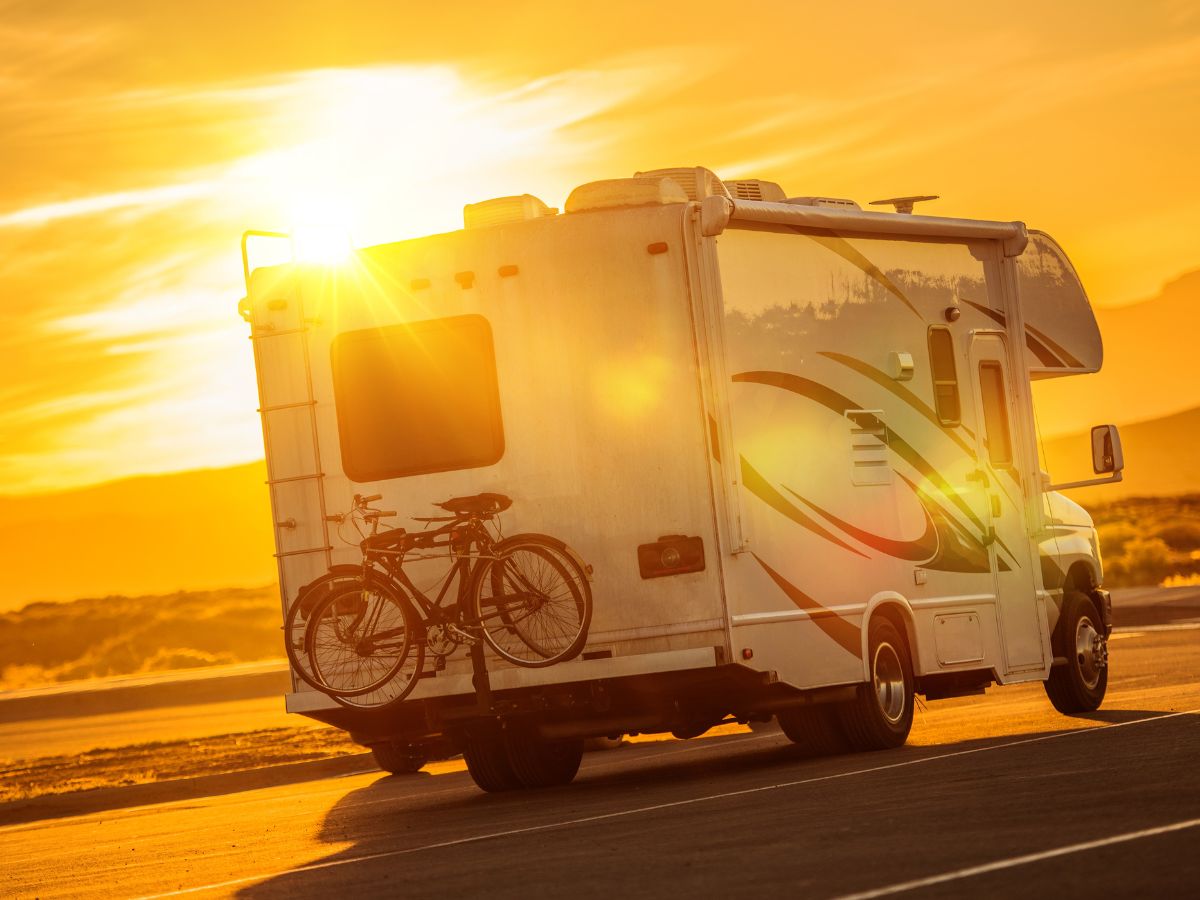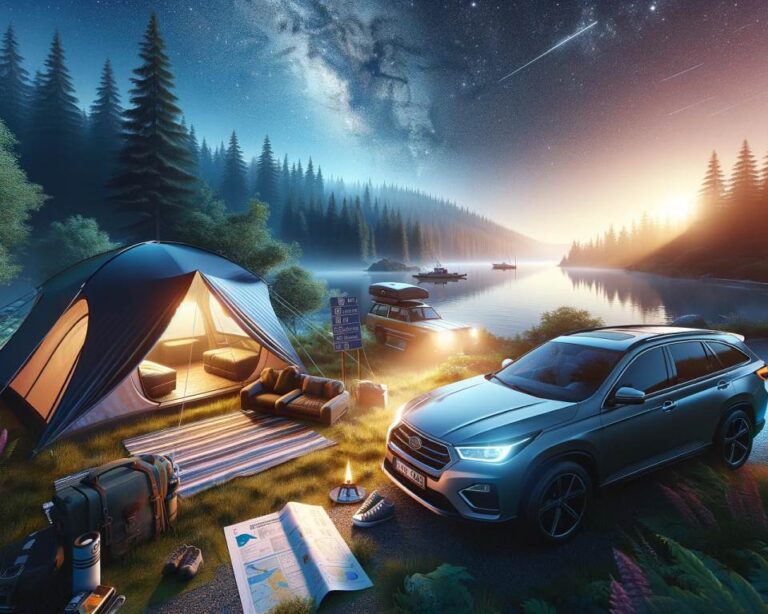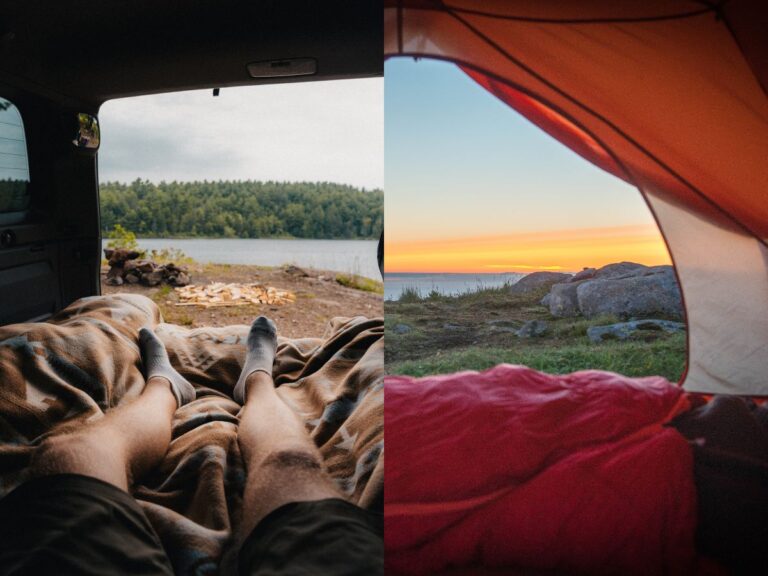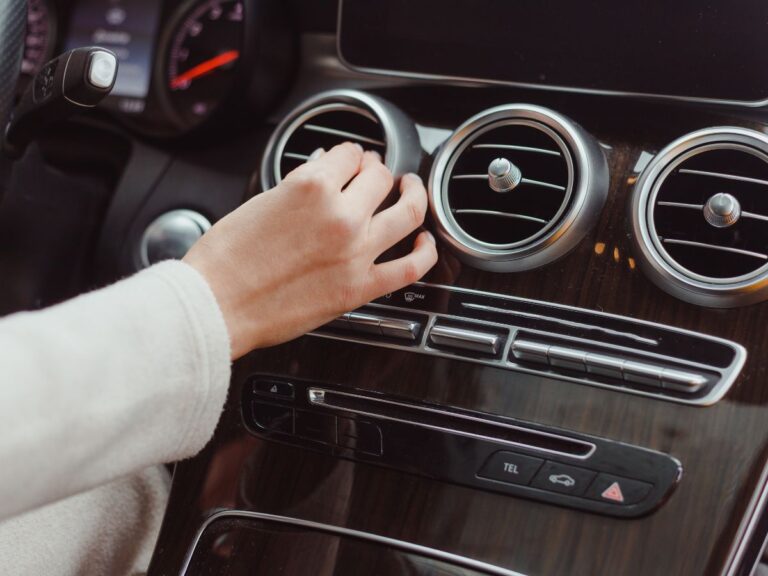How to Determine if It's Too Hot for Car Camping: 7 Tips
To decide if it’s too hot for car camping, check weather forecasts, keep tabs on shade options, consider heat index, plan activities wisely, stay hydrated, grasp heat-related illnesses, and prep for comfort. Assess forecasts, monitor shaded areas, factor in heat index, choose activities smartly, hydrate, recognize heat illnesses, and plan for comfort to guarantee a safe camping experience.
Check Weather Forecasts
Before starting a car camping trip, always remember to check the weather forecasts diligently to make sure you are prepared for any extreme conditions. Packing essentials like lightweight and breathable clothing, a wide-brimmed hat, sunscreen, and plenty of water are essential for staying safe in hot weather. Additionally, finding shade is paramount to avoid heat-related illnesses. When setting up your campsite, look for natural shade from trees or choose a spot where the vehicle provides shade during the hottest parts of the day. Bringing along a portable canopy or tarp can also provide relief from direct sunlight.
Checking the weather forecast will not only help you plan your activities but also guarantee you are prepared for any temperature fluctuations. High temperatures can lead to dehydration, heat exhaustion, and even heatstroke if proper precautions are not taken. By being proactive and monitoring the weather forecast, you can adjust your plans accordingly to stay safe and enjoy your car camping trip to the fullest.
Monitor Temperature Trends
To make informed decisions about car camping in hot weather, utilize weather apps to track temperature trends, regularly check local forecasts for updates, and keep an eye on thermometer readings. By monitoring temperature trends, you can better assess whether conditions are suitable for comfortable and safe camping experiences. Paying attention to these data points will help you plan your trip accordingly and avoid potential discomfort or health risks associated with extreme heat.
Use Weather Apps
Consider utilizing weather apps to track temperature trends when determining whether it’s too hot for car camping. Weather apps provide valuable information such as temperature alerts and heat advisories that can help you make well-informed decisions about your camping trip. These alerts notify you of potentially dangerous heat levels, allowing you to plan accordingly and avoid putting yourself at risk of heat-related illnesses.
By monitoring temperature trends through weather apps, you can observe how hot it will be during the day and night, helping you prepare by bringing appropriate gear like fans, cooling towels, or extra water supplies. Additionally, some weather apps offer real-time updates and forecasts, giving you a detailed understanding of the temperature fluctuations throughout the day.
Being aware of heat advisories and temperature alerts through weather apps is vital for your safety during car camping trips, especially in hot weather conditions. Stay informed, plan ahead, and adjust your camping itinerary based on the temperature trends provided by these apps to guarantee a safe and enjoyable outdoor experience.
Check Local Forecasts
Monitoring local forecasts allows you to track temperature trends effectively when deciding if it’s too hot for car camping. By keeping an eye on the weather predictions, you can plan ahead and guarantee you have the necessary packing essentials to stay safe and comfortable during your trip. Look for indications of extreme heat warnings or heat advisories in the area you plan to camp in. High temperatures can not only affect your comfort but also your health, so it’s essential to make informed decisions based on the forecasted conditions.
Additionally, checking local forecasts can help you in choosing campsites wisely. Some locations may be more exposed to the sun or lack shade, making them hotter than others. By staying informed about the expected temperatures, you can select a campsite that offers adequate shelter and ventilation. Remember, the goal is to have an enjoyable and safe car camping experience, so take advantage of the available weather information to make informed decisions about your trip.
Watch Thermometer Readings
Watching thermometer readings allows you to track temperature trends accurately when determining if it’s too hot for car camping. Monitoring the temperature is vital to avoid heat-related illnesses like heat stroke and guarantee adequate sun protection. Here are three key points to keep in mind:
- Consistent Monitoring: Check the thermometer readings regularly throughout the day to observe any fluctuations in temperature. Sudden spikes can indicate a rapid increase in heat, necessitating precautions to prevent overheating.
- Compare Indoor and Outdoor Temperatures: Measure the temperature inside your car against the outdoor temperature. If the car interior is notably hotter than outside, it may not be safe for camping due to the risk of heat exhaustion.
- Nighttime Temperatures: Keep an eye on nighttime temperatures as well. High overnight temperatures can make it challenging to cool down, impacting sleep quality and increasing the likelihood of heat-related issues.
Consider Heat Index
To gauge the potential discomfort from high temperatures while car camping, pay attention to the heat index, which factors in humidity levels to provide a more accurate measure of how hot it feels. The heat index combines temperature and humidity to reflect what the perceived temperature is, helping you understand the actual impact on your body. When the heat index is high, the risk of heat-related illnesses like heat stroke increases. It’s important to prevent heat stroke by staying hydrated with plenty of water, wearing appropriate clothing, and seeking shade when possible. Recognizing the signs and symptoms of heat exhaustion, such as heavy sweating, weakness, and nausea, is essential. The heat index can give you a more thorough view of the environmental conditions you’ll face while car camping, allowing you to make informed decisions about your safety. Monitoring the heat index alongside other factors like shade availability will help you plan a safe and enjoyable camping trip.
Evaluate Shade Availability
Take into account evaluating the availability of shade at the car camping site to determine suitable spots for resting and cooling down during periods of high temperatures. Conducting a shade assessment and temperature analysis can help you pinpoint areas that offer relief from the sun and potential overheating risks. Here are some key points to take into consideration:
- Shade Assessment: Look for natural shade sources such as trees, rock formations, or man-made structures like shelters or awnings. These areas can provide protection from direct sunlight and help lower the ambient temperature.
- Sun Exposure: Avoid setting up camp in areas with prolonged sun exposure, especially during peak hours when the sun is at its strongest. Excessive sun exposure can lead to heat-related illnesses.
- Cooling Options: Plan to position your tent or rest area strategically to take advantage of shade during different times of the day. Additionally, consider bringing portable shade structures like umbrellas or pop-up canopies for added protection.
Careful evaluation of shade availability can have a significant impact on your comfort and safety during hot weather conditions while car camping.
Plan Outdoor Activities Wisely
Strategically planning your outdoor activities can maximize enjoyment and minimize risks while car camping in hot weather conditions. When it comes to outdoor safety during hot weather, thoughtful activity planning is essential. Consider participating in strenuous activities during the cooler parts of the day, such as early mornings or evenings, to avoid the peak heat hours. If you plan on hiking or exploring, choose shaded trails or areas with natural cover to protect yourself from direct sun exposure. Additionally, prioritize activities near water sources like rivers or lakes to cool off and stay hydrated.
Before starting on any outdoor activities, check the weather forecast for extreme heat warnings and plan accordingly. It’s advisable to have a backup plan in case conditions become too harsh. Remember to pack essential items like sunscreen, hats, and lightweight, breathable clothing to guarantee your comfort and safety while engaging in outdoor activities. By being proactive and strategic in your activity planning, you can make the most of your car camping experience while staying safe in hot weather.
Stay Hydrated and Cool
Plan your activities wisely to guarantee you stay adequately hydrated and cool during hot weather car camping. Maintaining proper water intake is essential to prevent dehydration. In high temperatures, your body loses fluids quickly through sweating, emphasizing the importance of drinking plenty of water throughout the day.
To stay cool and comfortable during your camping trip, consider the following:
- Water Intake: Carry a sufficient supply of water with you at all times. Aim to drink at least 8-10 cups of water per day, more if you are engaging in physical activities.
- Cooling Methods: Utilize cooling techniques such as wetting a bandana and placing it around your neck to help regulate body temperature. Additionally, invest in a portable fan or cooling towel to provide relief from the heat.
- Hydration Schedule: Establish a hydration schedule to make sure you are consistently drinking water. Set reminders on your phone or mark designated water drinking times on your camping itinerary.
Be Mindful of Heat-Related Illnesses
To prevent heat-related illnesses while car camping in hot weather, it is essential to understand the signs and symptoms to watch for in yourself and others. Dehydration is a major risk in high temperatures, so staying hydrated is vital. Make sure you drink plenty of water and electrolyte-rich fluids throughout the day. Hydration techniques like carrying a reusable water bottle and setting reminders to drink can help you stay on top of your fluid intake. Additionally, be mindful of sun protection strategies to avoid heat-related issues. Wear lightweight, light-colored clothing, a wide-brimmed hat, and sunglasses. Apply sunscreen regularly with a high SPF to protect your skin from harmful UV rays. If you start feeling dizzy, nauseous, or develop a headache, move to a shaded area, rest, and cool down your body with wet towels or by taking a dip in a nearby water source. Prioritizing hydration and sun protection can significantly reduce the risk of heat-related illnesses while car camping in hot weather.
Staying Safe and Comfortable While Car Camping in Hot Weather
To wrap up, by following these 7 tips to determine if it’s too hot for car camping, you can make informed decisions to stay safe and comfortable in high temperatures. Checking weather forecasts, monitoring temperature trends, taking into account heat index, evaluating shade availability, planning outdoor activities wisely, staying hydrated and cool, and being mindful of heat-related illnesses are key factors to take into account before setting off on a camping trip in hot weather. Stay informed and prepared to enjoy your outdoor adventures responsibly.







